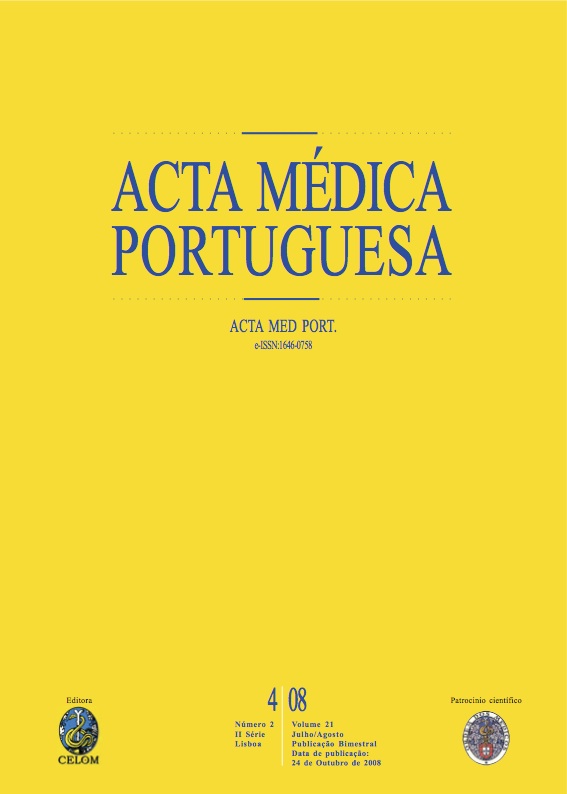Síndrome de pernas inquietas.
DOI:
https://doi.org/10.20344/amp.795Resumo
Restless legs syndrome (RLS) is a chronic sensorimotor disorder, with a negative impact in the quality of life and sleep architecture. Despite its reported high prevalence, remains under-recognized and under-treated. The diagnosis is based on the presence of four essential criteria, three supportive clinical features, and other three associated features. The primary or idiopathic RLS is the most common presentation form, but it is very important to exclude other RLS secondary forms and other differential diagnosis. The physiopathology of the idiopathic RLS remains unclear, however changes in the dopamine pathway have been proposed, and justifies the use of dopaminergic agents as first line treatment. Iron therapy, opioids, anti-epileptics (gabapentin) and benzodiazepines are others non-dopaminergic options of treatment in selected patients.Downloads
Downloads
Como Citar
Edição
Secção
Licença
Todos os artigos publicados na AMP são de acesso aberto e cumprem os requisitos das agências de financiamento ou instituições académicas. Relativamente à utilização por terceiros a AMP rege-se pelos termos da licença Creative Commons ‘Atribuição – Uso Não-Comercial – (CC-BY-NC)’.
É da responsabilidade do autor obter permissão para reproduzir figuras, tabelas, etc., de outras publicações. Após a aceitação de um artigo, os autores serão convidados a preencher uma “Declaração de Responsabilidade Autoral e Partilha de Direitos de Autor “(http://www.actamedicaportuguesa.com/info/AMP-NormasPublicacao.pdf) e a “Declaração de Potenciais Conflitos de Interesse” (http://www.icmje.org/conflicts-of-interest) do ICMJE. Será enviado um e-mail ao autor correspondente, confirmando a receção do manuscrito.
Após a publicação, os autores ficam autorizados a disponibilizar os seus artigos em repositórios das suas instituições de origem, desde que mencionem sempre onde foram publicados e de acordo com a licença Creative Commons









